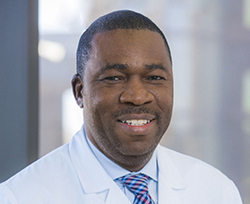Atrial fibrillation – What you need to know

Electricians of the heart (cardiac electrophysiologist) treat different forms of heart rhythm problems but by far, atrial fibrillation (afib) is the most common with millions of people in the United States affected. Unfortunately, the affected number of people is on the rise.
Afib is predominately a condition associated with getting older, but we do see young people with afib too. People older than 65 years are more likely to be affected. Additionally, women are affected more commonly than men. The increasing prevalence of obesity, sleep apnea, alcoholism, diabetes, hypertension and other chronic illnesses have a direct correlation with the increasing number of people with afib.
Afib is not the same for everyone. Some people only have it for few minutes to days and it goes away by itself. Some people have atrial fibrillation for days to months and usually require some form of medical intervention to get them back in sync. A good number of people are also permanently in afib without a need for any interventions.
Afib can present in different ways. While some people know when their heart goes into afib, a significant number of people do not. Many people will present to the hospital with stroke, congestive heart failure, extreme fatigue or chest pain. For people that have awareness of their afib, they typically can feel their heart racing, out of sync or develop lightheadedness. A few people do pass out especially in older population.
Your health care provider usually makes the diagnosis of afib after a physical examination or an electrocardiogram (EKG). Occasionally, some people will require long term heart monitoring to pick the afib.
There are two main goals in management of people with atrial fibrillation. The first is to minimize the risk of stroke while the other is to fix the afib.
With regards to stroke prevention, your doctor will use a universal risk assessment score to determine your risk. Typically, younger people with no other medical conditions have a lower risk while older people with severe comorbidities have a higher risk. The most common medication utilized for stroke reduction is a blood thinner called Warfarin which requires routine blood testing to make sure the blood is thin enough but not too thin. The blood test measures an international normalized ratio with a goal of 2-3. More recently, newer blood thinners have been developed which do not require routine blood testing. More patients have been switching to these new blood thinners, but they tend to be more expensive. The manufacturers do have programs that can make the medications cheaper.
For people that are unable to take the blood thinners for various reasons, there are other ways to minimize the risk of stroke by closing the pouch where blood clot tends to form in the heart. These techniques however are invasive.
The decision to treat afib is influenced significantly by the presence of symptoms. For patients without any symptoms, we do not necessarily have to give them any new medications or try to get them back in normal rhythm. However, with any symptoms, it is better to treat with medications that can either help slow down the afib or restore normal rhythm. Most of the medications used to treat afib can cause side effects over time and require careful considerations when prescribing.
For people that do not respond well to medications, cannot tolerate medications or do not want medications, ablation becomes a very reasonable option. Ablations for afib can be performed usually through the legs or surgically in some cases. People that have intermittent afib tend to benefit more than people that are in afib all the time. Occasionally, people that have afib will need a pacemaker with the ablation but this is generally not necessary with newer techniques. Some people need pacemakers because the medications used for treating afib can cause their heart rates to be too slow.
Atrial fibrillation management and preventions includes modifying risk factors with weight loss and exercise, treatment of sleep apnea, prevention and control of diabetes and hypertension.
Olusegun Oyenuga, M.D., is co-director of Cardiac Electrophysiology at the Texas Tech Physicians Center for Cardiovascular Health and an assistant professor at Texas Tech University Health Sciences Center.
Related Stories
Celebrating Veterans: TTUHSC’s General Martin Clay’s Legacy of Service and Leadership
From his initial enlistment in the Army National Guard 36 years ago to his leadership in military and civilian health care management roles, Major General Martin Clay’s career has been shaped by adaptability, mission focus and service to others.
Texas Tech University Health Sciences Center School of Nursing Named Best Accelerated Bachelor of Science in Nursing Program in Texas
The TTUHSC School of Nursing Accelerated Bachelor of Science in Nursing (BSN) program has been ranked the No. 1 accelerated nursing program in Texas by RegisteredNursing.org.
TTUHSC Names New Regional Dean for the School of Nursing
Louise Rice, DNP, RN, has been named regional dean of the TTUHSC School of Nursing on the Amarillo campus.
Recent Stories
TTUHSC Cancer Researcher Honored by National Academy of Inventors
C. Patrick Reynolds, M.D., Ph.D., director of the School of Medicine Pediatric Cancer Research Center at TTUHSC, has dedicated his life as a researcher to developing treatments for childhood cancers.
TTUHSC School of Nursing Celebrates 10 Years of the Veteran to BSN Program
The TTUHSC School of Nursing recognized the 10-year anniversary of the Veteran to Bachelor of Science in Nursing (VBSN) program during the fall 2025 commencement ceremonies held Dec. 13 in Lubbock, Texas.
TTUHSC Dean to be Inducted into the National Academies of Practice as Distinguished Fellow
Gerard E. Carrino, Ph.D., MPH, dean of the TTUHSC Julia Jones Matthews School of Population and Public Health, will be inducted into the National Academies of Practice (NAP) as a Distinguished Fellow of the Public Health Academy.
